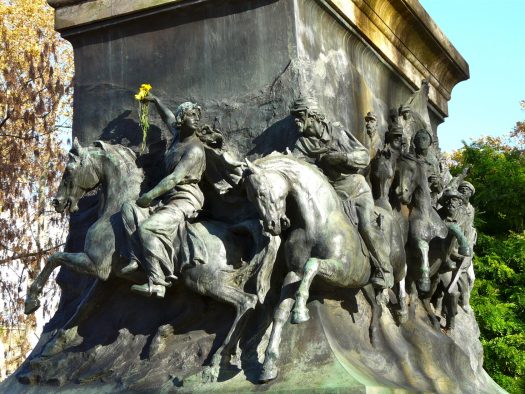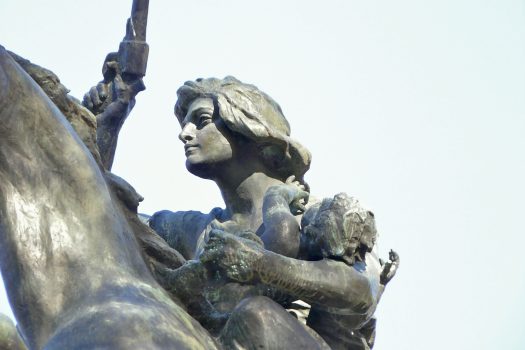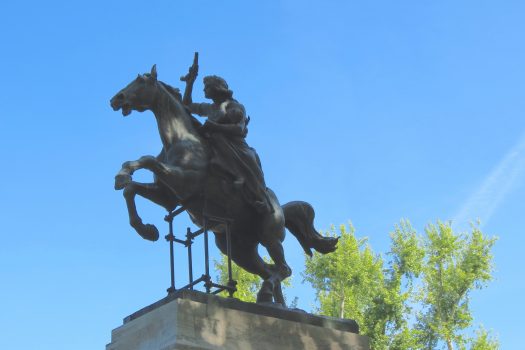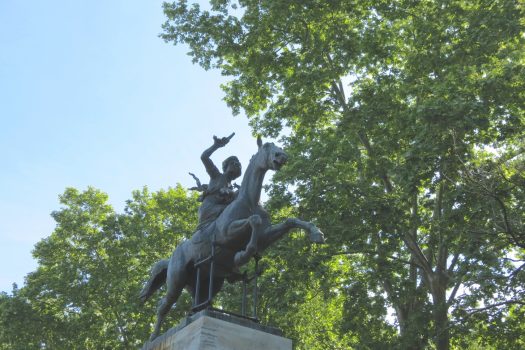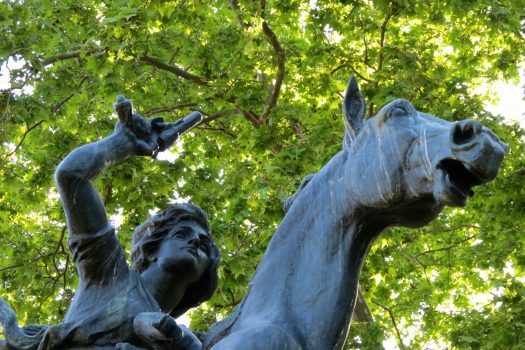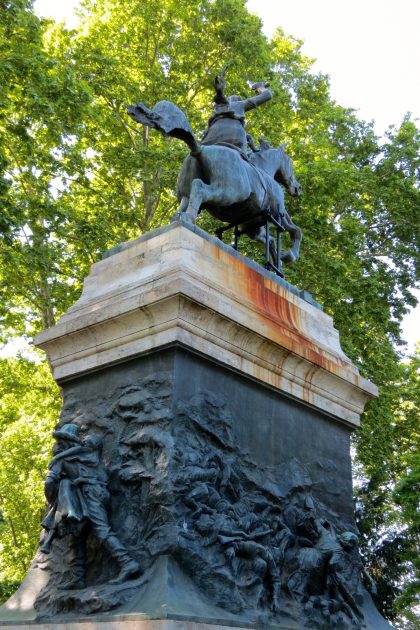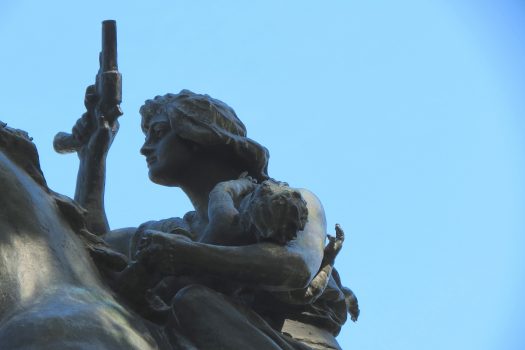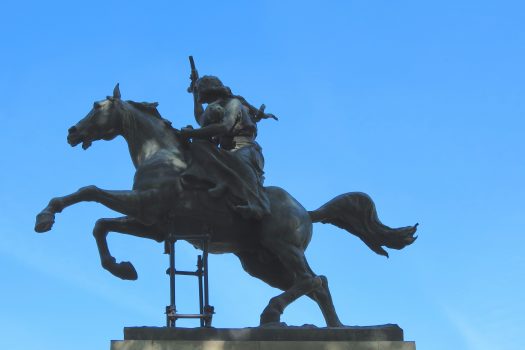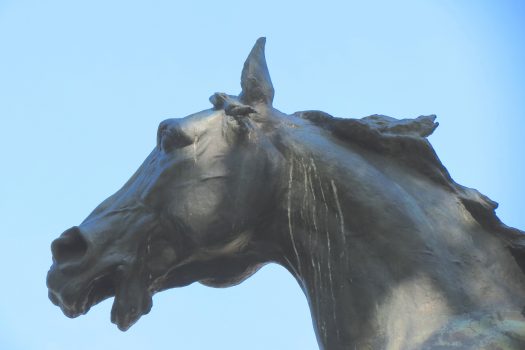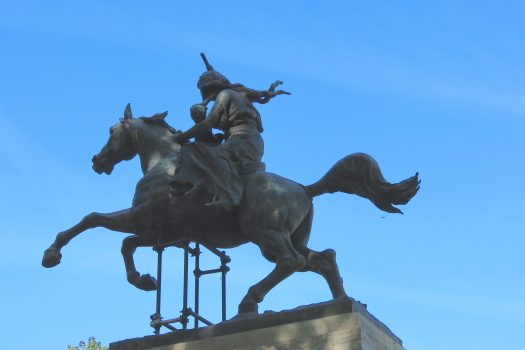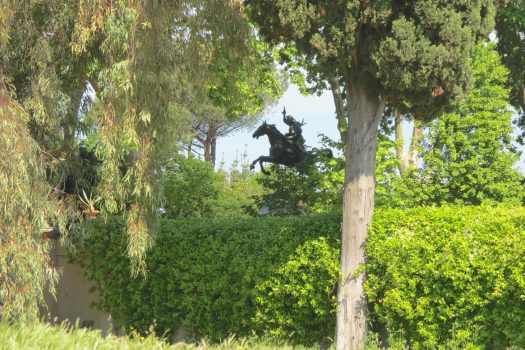- CountryItaly
- Town:Rome
-
Year of creation:1932
- Rider(s):Garibaldi, Anita
(1821–1849), commonly known as Anita, met Garibaldi in 1839 during his South American wars, and they fought alongside each other. The couple married in Montevideo in 1842 and they had four children. Anita, a skilled horsewoman, taught Garibaldi about the gaucho culture of southern Brazil and Uruguay. Around this time, he adopted his trademark clothing, which consisted of the red shirt, and sombrero commonly worn by the gauchos. Anita, who was carrying her fifth child, died in 1849 near during the epic march following the defeat in Rome.
- Sculptor(s):Rutelli, Mario
(1859 – 1941) was an Italian sculptor.
By the late 1920s Rutelli, who reached age 70 in 1929, could be described as “the oldest, most established, and most traditional of all Italian commemorative sculptors” of the time. For the Anita Garibaldi Monument, one of the statues and monuments of patriots on the Janiculum, Mussolini personally selected Rutelli for the commission, after rejecting designs by sculptor Ettore Ferrari.
From an interview with his great grandson:
“So models were used?
To be precise, my great-grandfather drew inspiration from a number of them. He was considered a heartbreaker, and apparently led a few ladies to believe that they were the only Muse of his work. In fact, he made up anonymous faces for these statues. But for Anita Garibaldi he decided to portray my grandmother. Mario’s daughter?
No, his daughter-in-law. I own the terracotta model of her portrait, and have seen the beautiful models of the monument on the Janiculum, which Mussolini inaugurated in 1932. That was another “thorny” inauguration, in a way
Why?
Mario Rutelli was very upset because the statue was downscaled by one third compared to his original design. He was told it was to save bronze. However, the statue is incredibly complex.
It was a difficult to make because it is a large equestrian statue with a rampant horse on his hind legs. Anita is moreover represented in a peculiar pose. She is doing three things at once: riding, holding her gun, and holding a baby. Apparently, Mussolini insisted on the third in order to include women’s role as mothers too.
The statue is not just a monument: it’s Anita’s grave. Five former soldiers from Garibaldi’s army carried her body, wrapped in the Italian flag, from Piazza Venezia to the Janiculum. We can only imagine what an effort that must have been for those old veterans.”
-
The equestrian statue by Mario Rutelli shows Anita on a rearing horse, holding a gun in her right hand and a child in her left arm. The story is that Mussolini insisted on the baby in order to include the ‘role of women as mothers’. This addition most probably caused the statue to be out of balance, resulting in the need for an ugly structure to keep it upright. The statue is not only a monument: it is also Anita’s grave. Five former soldiers from Garibaldi’s army carried her body, wrapped in the Italian flag, from Piazza Venezia to the Janiculum. We can only imagine what an effort that must have been for those old veterans.
